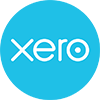Depreciation is a financial concept that plays a crucial role in the accounting landscape. For businesses leveraging Xero, a leading accounting software, understanding and effectively managing depreciation is essential for accurate financial reporting. In this comprehensive guide, our Xero bookkeepers in Melbourne will demystify the concept of depreciation, highlight its importance and provide step-by-step instructions on how Xero users can efficiently manage and track depreciation expenses.
Understanding Depreciation
What is Depreciation?
Depreciation is the gradual reduction in the value of an asset over time due to wear and tear, obsolescence or other factors. This reduction is recorded as an expense on the income statement and reflects the decrease in the asset’s value.
Why is Depreciation Important?
- Accurate Financial Reporting – Depreciation allows businesses to allocate the cost of an asset over its useful life, providing a more accurate representation of the true cost of generating revenue.
- Tax Deductions – Businesses can claim depreciation as a tax deduction, reducing their taxable income and ultimately lowering their tax liability.
- Asset Replacement Planning – Depreciation helps businesses plan for the replacement of assets as they near the end of their useful life.
Managing Depreciation with Xero
Step 1: Accessing Xero’s Fixed Assets
- Log in to Xero – Access your Xero account and log in.
- Navigate to ‘Accounts’ – In the main dashboard, go to ‘Accounts.’
- Select ‘Fixed Assets’ – Choose ‘Fixed Assets’ from the drop-down menu.
Step 2: Adding a New Asset
- Click ‘Add Asset’ – In the Fixed Assets dashboard, click ‘Add Asset’ to input a new asset.
- Enter Asset Details – Fill in essential details such as the asset name, purchase date, cost and category.
- Choose Depreciation Method – Xero allows you to select the depreciation method. Choose between straight-line or diminishing value.
Step 3: Depreciation Schedule
- Access ‘Depreciation Schedule’ – Once the asset is added, go to the ‘Depreciation Schedule’ section.
- Review and Adjust – Xero generates a schedule showing the depreciation expense for each period. Review and make any necessary adjustments.
Step 4: Reporting
- Generate Depreciation Reports – Xero provides reporting tools that allow you to generate detailed depreciation reports.
- Customise Reports – Tailor reports to your specific needs by customising the date range and asset categories.
Step 5: Integration with Other Xero Features
- Invoicing and Expense Tracking – Xero’s seamless integration allows you to link depreciation expenses with invoicing and overall expense tracking.
- Real-Time Updates – As you make adjustments or add new assets, Xero updates your financials in real-time, providing accurate and current data.
Conclusion
Demystifying depreciation for Xero users is key to optimising financial management. By understanding the concept, leveraging Xero’s features and following these step-by-step instructions, businesses can efficiently manage and track depreciation expenses. This not only ensures accurate financial reporting, but also maximises tax deductions, contributing to the overall financial health and success of the business. Embrace the power of Xero in simplifying the complexities of depreciation, and empower your business for strategic financial decision-making. To learn more, or to enquire about Xero bookkeeping accounting services for your business, contact Alexander Bright– a trusted provider of bookkeeping services in Melbourne.
Disclaimer: The accounting advice provided in this article is for informational purposes only and should be self-verified or consulted with a qualified accountant before making any financial decisions.
Managed Accounting Services
Our Newsletter
Article Categories
Select Month
 +61 3 8658 5821
+61 3 8658 5821




